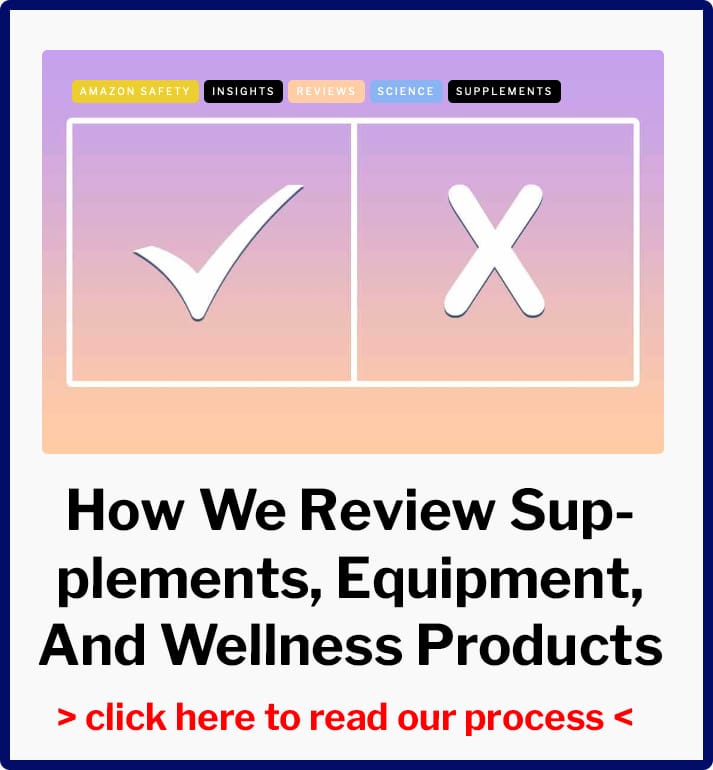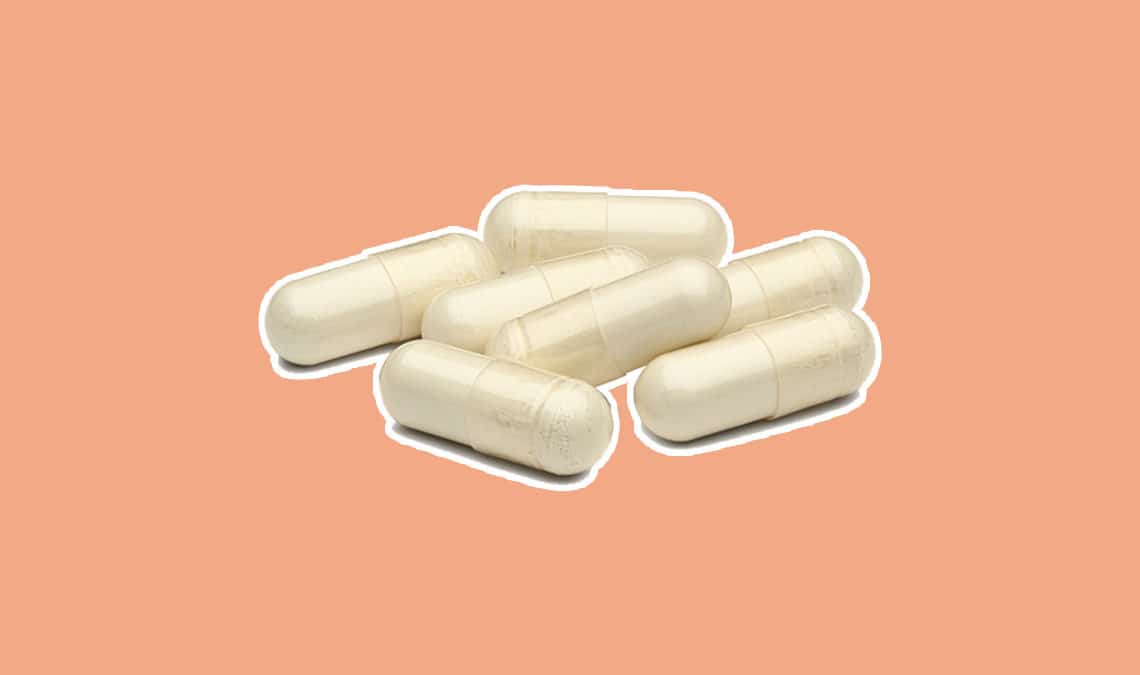
First: who am I, and why did we write this article?
I’m John Fawkes, and I’m a NSCA-certified personal trainer. I’m also certified by Precision Nutrition to be a nutritional counselor. I have a client base in Los Angeles who I advise on fitness routines, supplement regimens, and how to eat to stay healthy. I specialize in writing about weightlifting, exercise, bodybuilding supplements, and adaptogens.
We published this article because we noticed the growing interest in supplements to take with Adderall, specifically ashwagandha and Adderall, and wanted to create the most comprehensive source of information online about the subject, because it also happened to be in our wheelhouse.
The Unwinder strives to publish high-quality, trustworthy information about ‘new wellness’ that its readers can use as a reference for making decisions about how they can best optimize their health.
Disclaimer: The information provided in this article is for educational and informational purposes only and should not be considered as medical advice. The content is not intended to be a substitute for professional medical advice, diagnosis, or treatment. Always seek the advice of your physician or other qualified healthcare providers with any questions you may have regarding a medical condition.
Best Supplements For Adderall, At A Glance
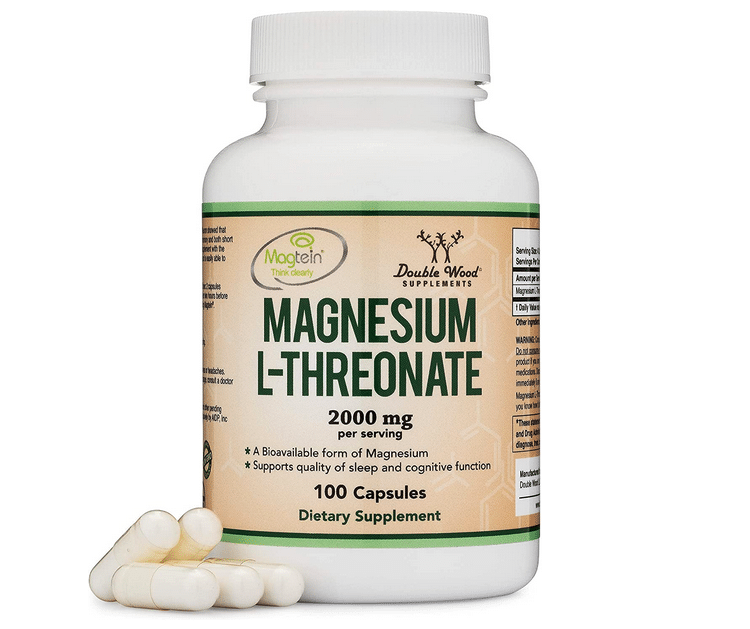
Best for the stimulant ‘come down’
Double Wood Magnesium Threonate
Magnesium has a rapid calming effect. Get Double Wood’s magnesium l-threonate if you’re looking to smooth out the Adderall ‘come down’.

Enhances the effect of stimulants without negative side effects
Neuromints Energy & Focus Mints
This combo of caffeine and Adderall is probably best if you’re very tired, or doing tiring physical work
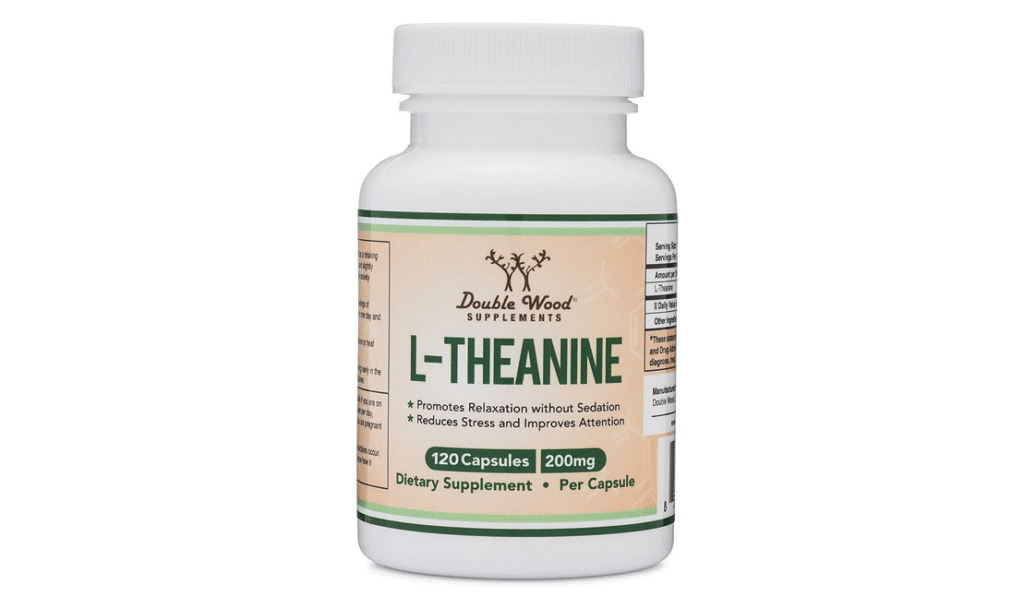
Takes the edge off of stimulants
Double Wood Supplements L-Theanine
L-theanine is an amino acid that has a calming effect on the brain without being significantly sedating so that you can enjoy the energy without the loss of focus.
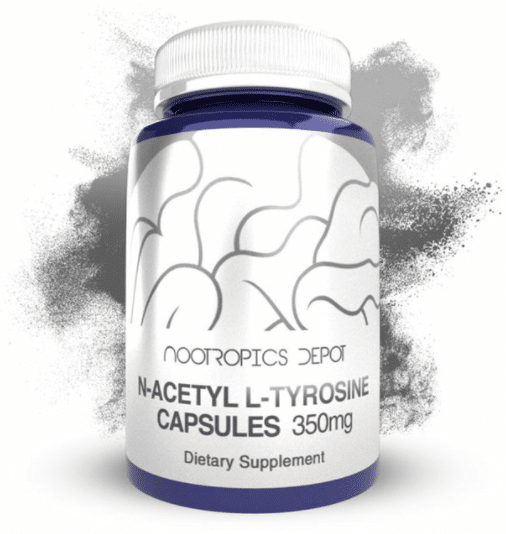
Extends the effect and aids recovery
Nootropics Depot N-Acetyl-L-Tyrosine (NALT) Capsules
Taken a few hours after Adderall, l-tyrosine can extend the effect. Or, taken after Adderall wears off, it can replenish your brain’s tyrosine reserves, which helps to restore the ability to produce dopamine normally and reduces the “crash” or withdrawal.
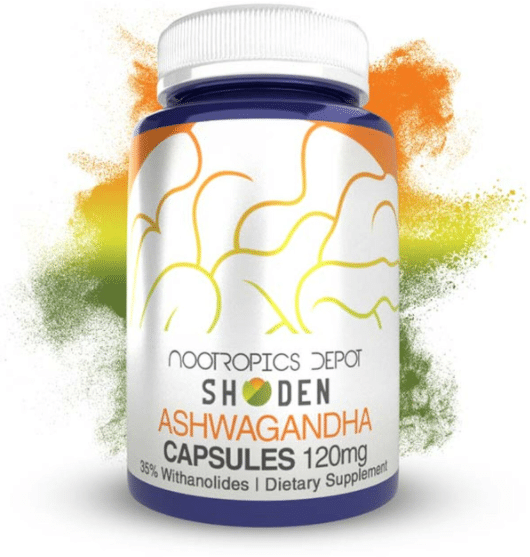
Also takes the edge off, and helps with focus
Nootropics Depot Shoden® Ashwagandha Extract Capsules
Ashwagandha is a nootropic and adaptogen used mainly for its anti-anxiety effects. It moderates the side effects of stimulants and helps with focus and stress.
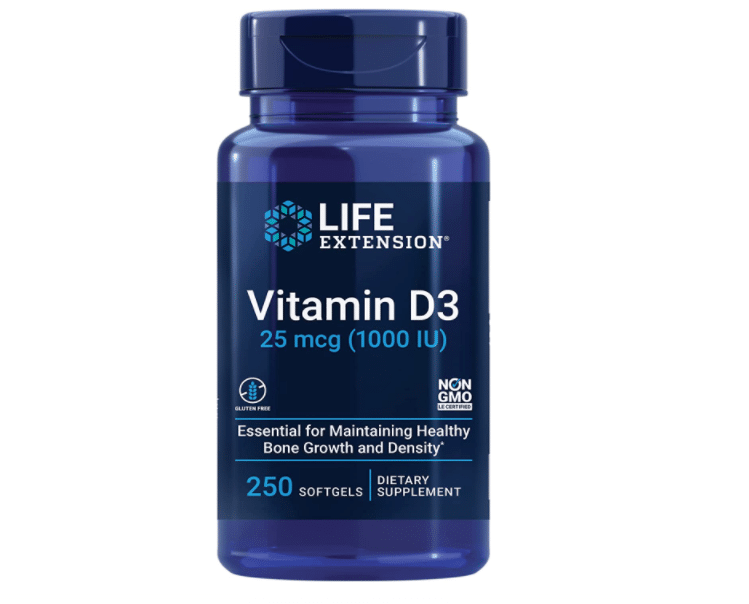
Great for overall health
Life Extension Vitamin D3 Capsules
Vitamin D is fat-soluble, so it builds up slowly over the course of weeks. Vitamin D is crucial to all-around health and should be dosed at 2,000 to 5,000 IU/day of vitamin D3, not D2.
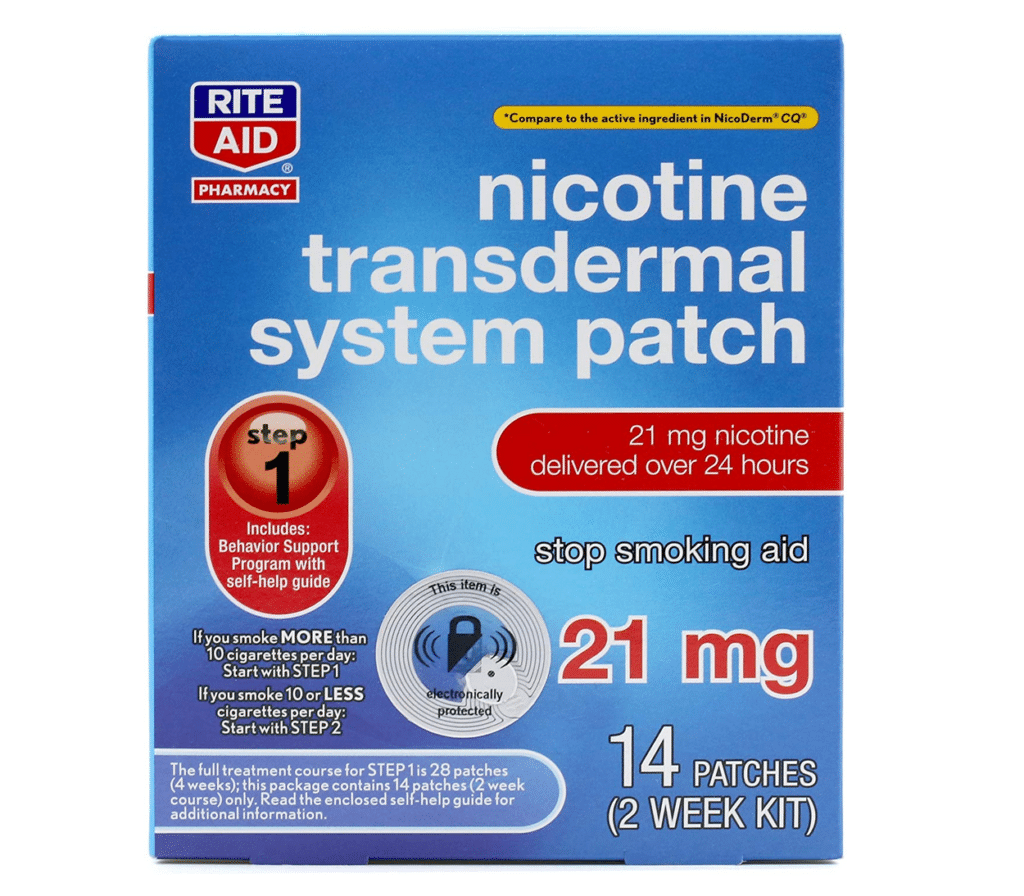
Best 2-in-1 appetite suppressant and nootropic
Rite Aid 21 mg Nicotine Patches
Nicotine combined with Adderall is useful for productivity or weight loss, not Attention Deficit Hyperactivity Disroder. Use low-dose patches for steady blood levels and minimal side effects.
Adderall has something of a bad reputation. Developed as a drug for ADHD and narcolepsy, it has arguably become more well-known–and also more popular–for its off-label uses.
People use the drug
to lose weight, enhance athletic performance, stay up all night partying, or simply feel good. Most notoriously however, Adderall has been widely abused as a nootropic–a study drug, or productivity and cognitive enhancement drug. As of 2022, Adderall is the 51st most-prescribed drug in the United States.
As an amphetamine-class drug, it should not be underestimated or taken lightly. However, it’s not an evil drug, and used properly, it can be life-changing for many people.
Part of the key to making Adderall work is not using more of it than you need. In this article, we’ll discuss other supplements you can take with it–as well as non-chemical approaches to mental enhancement–in order to maximize the utility you get out of the drug while minimizing the risks and side effects.
How Adderall Works
Adderall is actually a mix of four different amphetamine salts: dextroamphetamine sulfate, amphetamine sulfate, dextroamphetamine saccharate, and amphetamine aspartate monohydrate. Each of these salts contains amphetamine.
Amphetamine itself comes in two enantiomers–mirror-image versions of amphetamine, the way your left and right hand are mirror images of each other. These enantiomers are called dextroamphetamine and levoamphetamine. Two of the amphetamine salts in Adderall contain only dextroamphetamine, while the other two contain a fifty-fifty mixture of dextro- and levoamphetamine. Thus, Adderall yields a 3:1 ratio of dextro- to levoamphetamine.
This ratio is important because dextroamphetamine and levoamphetamine interact with the brain in slightly different ways. Dextroamphetamine is more potent in releasing dopamine and norepinephrine, the key neurotransmitters involved in attention and focus. Levoamphetamine helps extend the effects and delivers more physical stimulation. The combination provides mental focus with less jitteriness.
Specifically, the drug works by:
- Increasing the amount of dopamine and norepinephrine available in the brain by causing more release and blocking their reuptake. This enhances attention, motivation and alertness.
- Triggering the release of additional neurotransmitters like serotonin, epinephrine and histamine. This adds to the energizing and mood-lifting effects.
- Stimulating the prefrontal cortex, which is involved in executive functions like working memory, cognitive flexibility and impulse control. This provides mental focus and cognitive enhancement.
The different amphetamine enantiomers also have varying half-lives. Dextroamphetamine lasts 9-11 hours, while levoamphetamine lasts 11-14 hours. This allows Adderall to provide long-lasting effects with a biphasic pattern of elimination.
By targeting key neurotransmitters and brain regions, it can improve symptoms of ADHD and serve as a cognitive enhancer at therapeutic doses.
What Are The Effects Of Adderall On The Brain?
Adderall works primarily by increasing the actions of the neurotransmitters dopamine and norepinephrine in the brain, and secondarily by triggering the release of serotonin, epinephrine, histamine, and several neuropeptides.
According to Jason Law of the Hallowell-Todaro ADHD Center, people with ADHD usually have too little dopamine and norepinephrine–both stimulant neurotransmitters in the pre-frontal cortex. Most of the time, anyway–when people with Attention Deficit Hyperactivity Disorder get really interested in something, their dopamine and norepinephrine levels spike too high.
Law says that Adderall, at low doses, stabilizes those neurotransmitters, raising the baseline level while also attenuating the propensity for large spikes. This stability, paradoxically, has a calming effect. He adds that caffeine can have a similar effect, but the side effects are greater because it is more systemic in its effects, while Adderall is more targeted to the pre-frontal cortex.
Typical Adderall Dosages
Although amphetamines last well over ten hours, their effects start to decline noticeably after four hours. Thus, extended-release formulations of Adderall and other ADHD drugs have become popular for the greater stability and ease of use they provide. A 12-hour extended release formula is available as a generic, while a 16-hour version is sold under the brand name Mydayis.
For ADHD patients, the typical starting dosage for immediate-release Adderall is 5-10 mg taken 1-2 times per day. This can be gradually increased by 5-10 mg per dose if needed, up to a maximum of 40 mg per day.
For extended-release Adderall XR, the starting dosage is typically 10-20 mg taken once daily. This can also be increased gradually up to a maximum of 30 mg per day. Always follow your doctor’s instructions for dosing.
People who use the drug recreationally or as a nootropic or athletic enhancer frequently use higher doses, often 20 mg or more per dose. At those dosages, it can be very addictive and exhibits exactly the side effects you’d expect from amphetamines–tachycardia, sweating, twitching, headaches, insomnia, and mood swings.
Regardless of what you’re using Adderall for, there are two things you’d always like to be able to do–get the same benefit from a lower dose, and minimize the side effects from the dose you’re using.
The rest of this article will be dedicated to breaking down the different interactions with supplements. There are several ways vitamins and supplements interact with the drug; namely, people experiment with supplement stacks to potentiate the effect of Adderall, lengthen the duration of its effects, ‘smooth’ out the negative side effects.
Adderall Supplement Stack Table: A Quick Guide To How To Make It More Effective, Smoother, Last Longer, and More
How to make Adderall wear off so I can sleep? In general, how to make Adderall more effective? You may have gotten to this article after asking yourself these questions. We’ve put together a brief table of Adderall supplement stacks that address each of these questions and more.
| Adderall Supplement Stack | When to take | Effect |
| Magnesium and Adderall | At the same time as Adderall | Anxiety reducer—takes the edge off Adderall |
| Vitamin D and Adderall | Regularly | Improves mental performance |
| Zinc and Adderall | The day you take Adderall | Makes Adderall effect stronger (experiment by taking less Adderall when you take zinc) |
| L-tyrosine and Adderall | At the same time as Adderall | Makes Adderall effect stronger (experiment by taking less Adderall when you take l-tyrosine) |
| L-tyrosine and Adderall | A few hours after taking Adderall | Extends the Adderall effect |
| L-tyrosine and Adderall | After Adderall effect wears off | Reduces Adderall hangover effects |
| L-theanine and Adderall | At the same time as Adderall | Anxiety reducer—takes the edge off Adderall |
| Caffeine and Adderall | At the same time as Adderall | Makes Adderall effect stronger (experiment by taking less Adderall when you take caffeine) |
| Ashwagandha and Adderall | At the same time as Adderall | Anxiety reducer—takes the edge off Adderall; helps you sleep after |
| Nicotine and Adderall | At the same time as Adderall | Makes Adderall effect stronger (experiment by taking less Adderall when you take nicotine) |
Vitamins To Take With Adderall
Many vitamins and minerals can be helpful add-ons to Adderall.
B vitamins in general are crucial for mental performance, although they have no particular synergy with Adderall.
Tommy Black, a former school psychologist and now CEO of children’s mental health startup Esteem Therapeutics, recommends several other supplements for ADHD patients. “Magnesium has decent effects. Vitamins E and D are important too, but magnesium is the biggest. Magnesium is a laxative though; don’t use magnesium citrate, which is the most common form. Use magnesium threonate or glycinate, those absorb better.”
Magnesium
Magnesium helps regulate nerve impulses and neurotransmitter activity in the brain. This can help improve focus and concentration when taking Adderall. The calming effect of magnesium also reduces the anxiety that can come with stimulant use. Magnesium is usually dosed at 100 to 400 mg, and different forms of magnesium vary considerably as to how much magnesium they have by weight. We’ve reviewed our favorite form of magnesium, magnesium threonate, previously in our article on the 5 best magnesium threonate supplements.
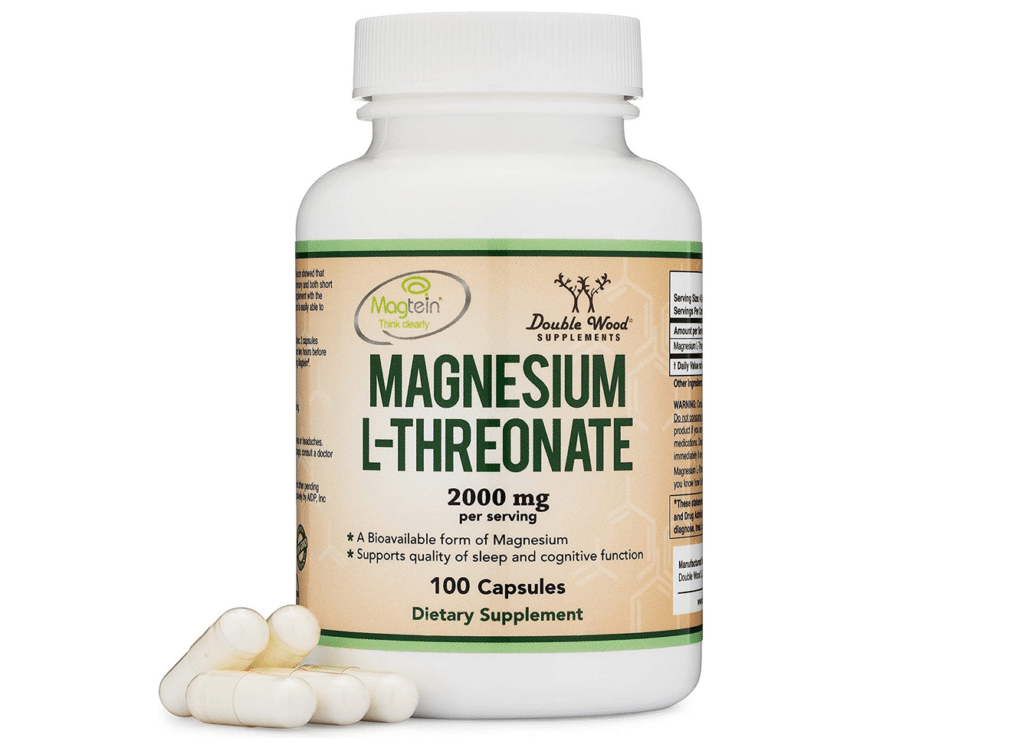
Our recommendation
Double Wood Magnesium Threonate 2000 mg
With 144 mg elemental magnesium, Double Wood’s magnesium l-threonate is a GMP-certified magnesium supplement manufactured in the USA. Doublewood Supplements are a trusted brand in the wellness industry, enjoying a long-standing reputation for quality and trustworthiness.
Vitamin D
Vitamins D and E are both fat-soluble, so they build up slowly over the course of weeks. Vitamin D is crucial to all-around health and should be dosed at 2,000 to 5,000 IU/day of vitamin D3, not D2.
Vitamin E is an antioxidant, protecting the body from free radicals. It should be dosed at 50 to 200 mg per day. Vitamin D is important for overall brain health and cognitive function. Getting sufficient vitamin D can enhance the energizing and focusing effects of Adderall.

Our recommendation
Life Extension Vitamin D3 (1,000 IU)
Life Extension is an established brand, and so checks the “trustworthiness box” for us. We like this 1,000 IU option because it allows for flexibility and precision with dosing. However, they also offer a 5,000 IU option as well.
Vitamin C
Vitamin C is also an antioxidant that can protect the brain from free radical damage. It supports the production of neurotransmitters depleted by Adderall, including dopamine, epinephrine and norepinephrine. Vitamin C may also help reduce Adderall tolerance over time.
Vitamin E
Vitamin E is an antioxidant that protects brain cell membranes from oxidative damage. Oxidative stress has been linked to reduced dopamine levels. Vitamin E can help maintain healthy dopamine function to get the most benefit from Adderall.
One other mineral to be aware of is zinc. One study found that zinc potentiates Adderall; it found “a 37% reduction in amphetamine optimal dose with 30 mg per day of zinc.” In other words, if you take zinc, you should reduce your Adderall dosage by one-third. If taken, zinc should be dosed at 15 to 30 mg per day for men, or 10 to 20 for women.
L-Tyrosine And Adderall Can Enhance The Effect And Help You Recover
Another amino acid, L-tyrosine is the main building block of dopamine. Since Adderall increases the production and utilization of dopamine, it also causes your brain to use more tyrosine.
When To Take L-Tyrosine
Due to the effect of L-tyrosine, Adderall interacts with it in one of three ways. So there are a few different timing methods that have different effects—choose the one that fits your use case best. Taken with Adderall, l-tyrosine can potentiate it, which means it can increase the effect of Adderall. Taken a few hours after Adderall, it can extend the effect, delaying the point where Adderall feels like it’s wearing off (even though it really lasts all day).
L-Tyrosine: Adderall Comedown
Or, taken after Adderall wears off, it can replenish your brain’s tyrosine reserves, which helps to restore the ability to produce dopamine normally and reduces the “crash” or withdrawal after Adderall wears off. In fact, Tyrosine is sometimes used this way by people quitting caffeine.
We recommend the second and third uses over the first. In practice, that means when taking L-tyrosine with Adderall, taking 500 to 1000 mg of L-tyrosine 4 hours after taking Adderall, and another 500 to 1000 mg 12 to 24 hours after, generally first thing the following morning.

Our recommendation
Nootropics Depot N-Acetyl-L-Tyrosine (NALT) Capsules
NALT has superior bioavailability and solubility compared to L-tyrosine, due to the addition of an acetyl molecule.
As such, it’s always preferable to use L-tyrosine in NALT form whenever possible.
This product contains 120 capsules total, with each capsule providing 350 mg of pure NALT.
L-Theanine May Help Take The Edge Off
We’ve written about L-theanine before. It’s an amino acid that exerts a calming effect on the brain without being significantly sedating. Theanine is commonly used in conjunction with caffeine to moderate caffeine’s side effects–such as twitchiness, irritability, and distractibility–to enhance its nootropic effect, enabling a stronger sense of focus.
Theanine can have much the same effect when paired with Adderall, reducing the mental side effects so that you can enjoy the energy without the loss of focus. It should be taken at the same time as Adderall. The usual dosage is 200 mg, but some people prefer to use only 100 mg, particularly when paired with a loser stimulant dosage.
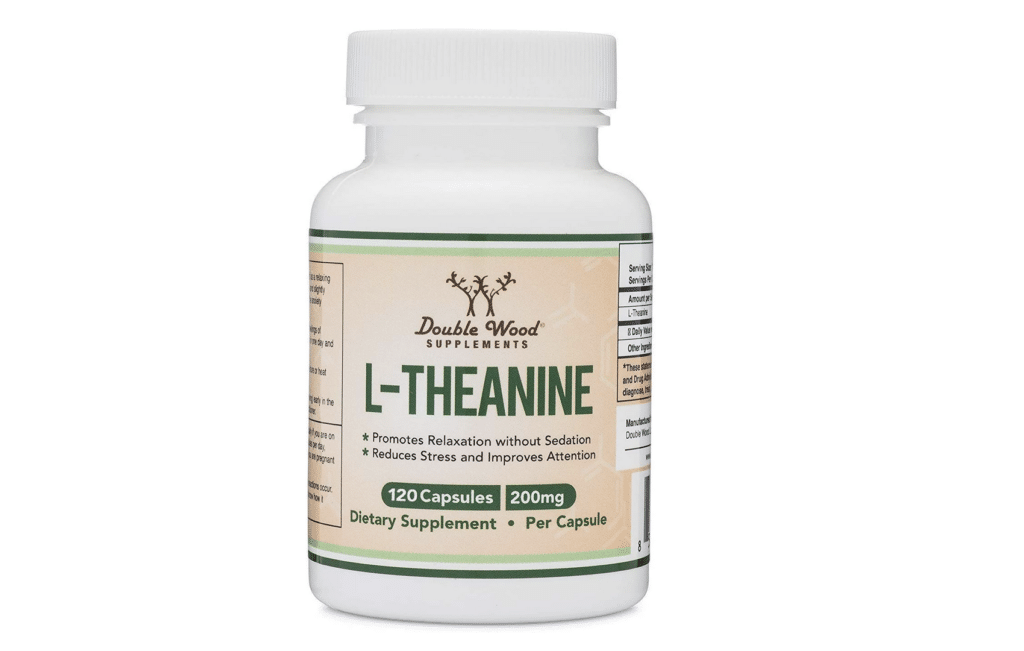
Our recommendation
Double Wood Supplements L-Theanine
Products by Double Wood Supplements are made in the USA, 3rd-party lab tested, and are manufactured in a GMP facility. We recommend their products whenever we have the opportunity.
This product comes with 120 capsules, each containing 200 mg of L-theanine.
However, these capsules are made with gelatin, making them unfit for vegans or vegetarians.
Caffeine Can Enhance the Stimulant’s Effect
As mentioned earlier, caffeine has more global effects, which means it may cause more physical side effects like a racing heart or increased body temperature. However, you’re likely already using caffeine, and it’s probably better to combine low-dose caffeine rather than increase the stimulant dosage.
Many of caffeine’s effects are similar, albeit with more physical side effects. The difference is caffeine suppresses tiredness by blocking adenosine receptors. So combining caffeine can provide a powerful anti-fatigue effect and intense focus—but may also prevent sleep.
This combo works well if you’re very tired or doing physical work. In those cases, use 40-100 mg caffeine, or half as much otherwise. Stop caffeine 10+ hours before bedtime. L-theanine can also help smooth out side effects when added to this stack both initially and later before sleep.
By using caffeine strategically with the stimulant, you can enhance mental acuity and avoid less desirable effects.
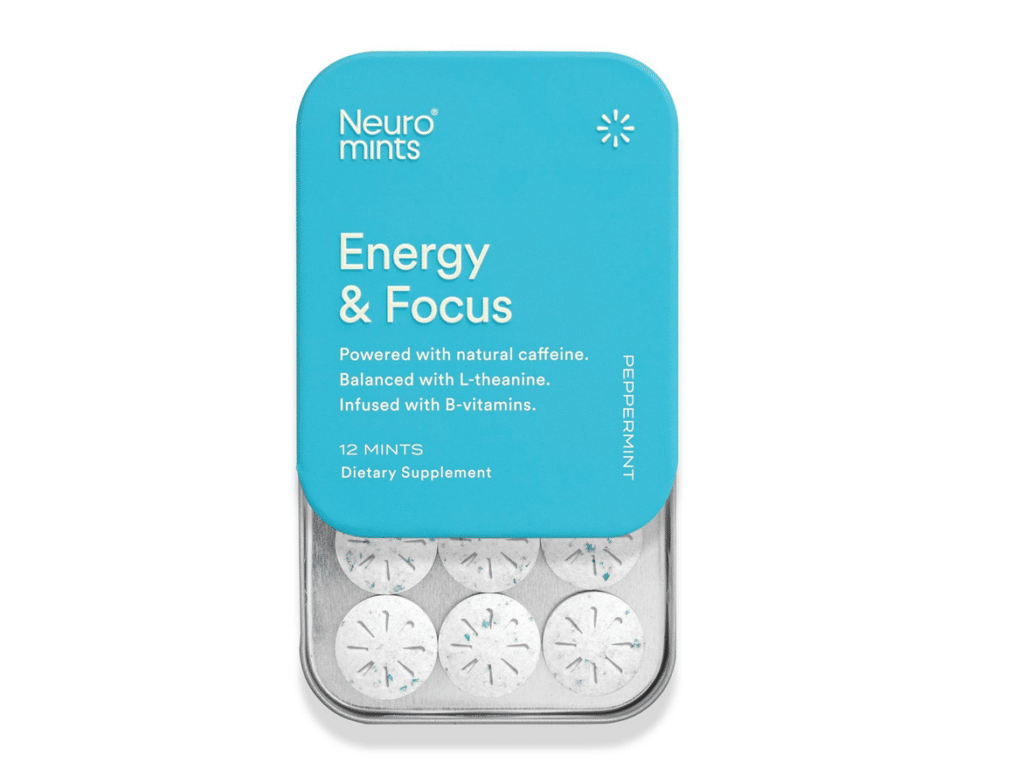
Our recommendation
Neuromints Energy & Focus Mints
These are precisely dosed, and have theanine in a 3:2 ratio to caffeine. They also have B vitamins– discussed later.
Ashwagandha And Adderall Can Take The Edge Off And Help You Sleep
Ashwagandha is a nootropic and adaptogen used mainly for its anxiolytic (anti-anxiety) effects. Similar to theanine, it moderates the side effects of stimulants and helps with focus and stress. It will generally have a more noticeable sedative effect than theanine, so it’s probably preferable if Adderall gives you anxiety or makes you jumpy–or if you happen to be stressed out for external reasons, such as work stress, while using it.
As we’ve mentioned before, the active ingredient in aswagandha is withanolides, and it should be dosed based on withanolide content rather than the full raw weight of the ashwagandha. Dosing is fairly individual; 10 to 30 mg of withanolides is usually good for cognitive enhancement, while 30 to 50 is more of an evening dose.

Highest potency
Nootropics Depot Shoden® Ashwagandha Extract Capsules
If you’re looking for Ashwagandha capsules with the highest concentration of withanolides, then Nootropics Depot has the product for you.
Each capsule provides 120 mg of concentration of Shoden® Ashwagandha Extract that has a concentration of 35% withanolides – this is incredibly hard to come across!
It is recommended to take one capsule up to two times daily.
Using Nicotine Can Enhance Adderall’s Effects
Nicotine is mainly sold as an aid to quit smoking, but it is also commonly used as an appetite suppressant and nootropic. Unlike smoking, nicotine on its own is quite safe and has low addiction potential. It also doesn’t feel very stimulating–you’ll feel awake and focused, but won’t get hot or hyperactive.
The most common side effects are skin rashes (if nicotine patches are put on the same place over and over) or nausea (if you take too much at once). In fact, nausea is very likely if you’re a non-smoker and try to use nicotine gum without having built up a tolerance for it.
The best way to take nicotine is in transdermal patch form, which gives you steady blood levels for 12-24 hours. Just be sure to take it off 2 to 3 hours before bed, and be aware that combined with Adderall, the appetite suppression can be extreme.
A good starting dose is a 3 to 4 milligram patch. Since patches are sold in 7, 14 and 21 mg doses, this means you’ll need to cut them up. As long as you’re doing that, you should save money by getting the 21 mg patches; they all cost the same amount.
This stack is useful for productivity or weight loss, not ADHD. Use low-dose patches for steady blood levels and minimal side effects.

Our recommendation
Rite Aid 21 mg Nicotine Patches
Rite Aid is obviously a well-established brand in the health and wellness industry. This generic form of Nicoderm does the trick as good as any, and at a good price at that.
Watch Out for Serotonin Syndrome
When combining certain supplements or medications with Adderall, there is a risk of developing serotonin syndrome. This is a potentially serious condition caused by dangerously high levels of the brain chemical serotonin building up in the body.
High levels of serotonin can lead to toxicity and produce symptoms like confusion, fever, shivering, sweating, diarrhea, headache, and rigid muscles. The risk of serotonin syndrome can occur if Adderall is combined with supplements that also raise or maintain high serotonin levels, like St. John’s wort, L-tryptophan, 5-HTP, and SAM-e.
To avoid the risk of serotonin syndrome, be very cautious when stacking Adderall with serotonergic supplements. Start with very low doses of any serotonergic additions and do not exceed the recommended safe amounts. Discontinue any combination that seems to cause concerning effects. If symptoms of serotonin toxicity develop, seek immediate medical attention. Careful supplement use and knowledge of drug interactions is key to preventing this dangerous serotonin buildup and staying safe.
More Ideas For How To Manage ADHD
Psychologist and ADHD specialist Dr. David Sitt highly recommends mindfulness meditation as a supplementary treatment for ADHD. “I encourage people to start off with just one minute of focusing your mind towards your breathing. So I tell myself for the next minute, I’m going to inhale, hold, exhale. Three times in a row. And then I’ve focused my mind for one minute on one thing alone. Most people come out of this with a greater sense of calm, clarity and focus.”
“Do this one minute once a day at minimum to start. Use an app like Waking Up or Headspace or Calm. Work up to doing guided meditation for three, five, eight, ten minutes at a time.” Sitt says that many of his patients are ultimately able to reduce or eliminate their need for Adderall using strategies such as mindfulness meditation and mindfulness cognitive behavioral therapy.
Neurofeedback
A more advanced form of mindfulness meditation comes in the form of neurofeedback—the use of brain-scanning EEG devices to provide feedback and guidance for meditation and focus exercises. Neurofeedback essentially trains your brainwaves to optimize mental states. One of the cheapest, most comfortable and user-friendly neurofeedback devices is The Muse EEG Headband.
Music for Focus
Listening to music on an infinite loop can also be helpful for productivity. Nootropics blogger Jonathan Roseland of Limitless Mindset likes Victory by Two Steps From Hell, while I prefer Stay Hungry by Twisted Sister.
Cognitive Training
There is also computer-generated algorithmic music designed to promote focus or relaxation. The best program for this is brain.fm, which has a free trial. Wear headphones to block out other sounds, and you’ll be able to tell within the first half hour whether it works for you.
Finally, Roseland recommends dual n-back brain training software for measuring the effectiveness of brain training and nootropics. He recommends BrainScale, a free web-based application.
Tracking Progress
When using a stumulant it’s important to carefully track your reactions. Dr. Black’s app Esteem, serves a similar purpose but is meant for parents monitoring their children’s ADHD symptoms, rather than adults monitoring themselves.
The key is to optimize your Adderall regimen through mindfulness, music, cognitive training, and tracking. Used alongside Adderall, these techniques can help manage symptoms of ADHD.
Remember that whatever you do, when you’re experimenting on yourself it’s imperative that you follow three rules.
First, only change one thing at a time.
Second, be conservative. Start out with low dosages of everything.
Third, have a way of measuring and tracking your results.
Follow these principles and you can find the Adderall stack that works for you, safely giving you the maximum cognitive benefit without the side effects.
